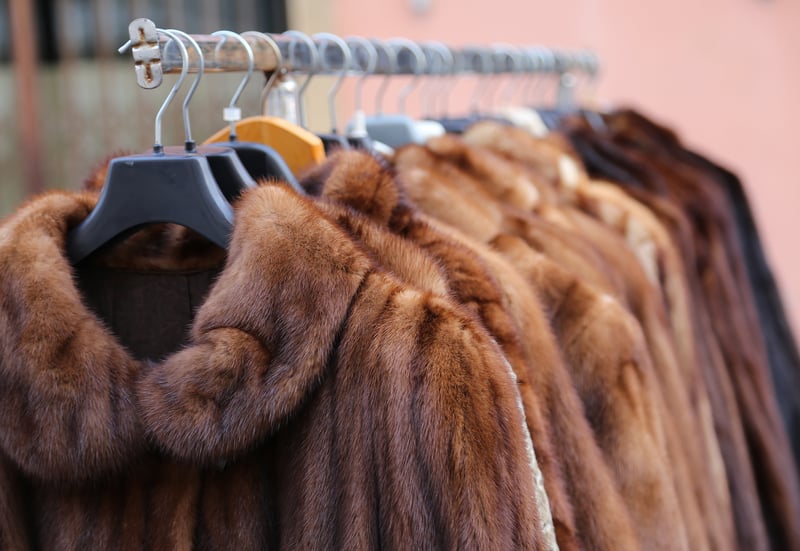
You’ll want to read this before purchasing any products using fur.
With the mob wife aesthetic continuing to trend across social media, there’s a question in almost every TikTok comment section: Is it ever okay to wear fur?
The answer: No. Even though it’s still pretty common to see people wearing fur coats or fur trim in colder months, fur production not only causes horrific animal suffering, it puts us all at risk of future pandemics. Don’t think so? Keep reading.
1. Animal Cruelty
Animals on fur farms suffer immensely throughout their entire lives in order to produce fur products. Around 100 million wild animals are farmed and killed globally each year in the fur trade, 95% of whom are bred and confined in cages. The species most commonly farmed by the fur industry are mink, foxes, chinchillas, and raccoon dogs.
Minks and foxes are confined to decrepit metal cages for their entire lives before being killed through methods such as bludgeoning in the head or face, anal or vaginal electrocution, and gassing. Animals are sometimes skinned alive while conscious.
If they’re taken from the wild, fur-bearing animals are often caught in painful traps for hours until the hunter finds and shoots them. These animals can—and often do—suffer for days from blood loss, shock, dehydration, frostbite, and gangrene. They are also left vulnerable to attacks by predators.
Many investigations have found that animals in these traps have chewed off their trapped limbs in order to free themselves—and these traps have also caught and killed companion animals such as cats and dogs.
In fact, California recently banned the sale of new fur products throughout the state due to the immense cruelty towards animals.
2. Spread of Disease
Overcrowded and unsanitary, fur farms are a breeding ground for zoonotic diseases like COVID-19 and avian flu. Millions of foxes and minks have been slaughtered on fur farms throughout the world in recent years as both diseases were detected in fur-bearing animals.
In fact, Finland slaughtered over 125,000 mink and foxes in August 2023 due to fears bird flu would mutate and more effectively jump to humans after it was reported in more than two dozen Finnish fur farms in July and August 2023 alone.
These diseases can spread and mutate rapidly in crowded fur and factory farms, increasing risk and transmission to animals in the wild. Most recently, highly pathogenic bird flu was responsible for killing a polar bear in Alaska and infecting penguin populations in the Arctic.
3 Ways You Can Help
- While World Animal Protection fights to end the suffering of animals around the globe, it’s important to remember that individual actions can add up. You can help fur-bearing animals by never purchasing fur products, either from retailers or from consignment shops. There are plenty of faux fur products that are stylish and warm to choose from!
- If you inherit fur products, many wildlife rehabilitation centers will accept them as donations. These vintage furs can help rehabilitate baby foxes, raccoons, and other animals who have lost their mothers or were injured in the wild. These donations help keep the animals warm and feeling comforted during their recovery. Several wildlife rehabbers in the United States accept donations of fur coats through the Coats for Cubs program.
- Finally, World Animal Protection US is supporting the Mink VIRUS Act, which will close mink fur farms across the United States for good, and help transition the farmers into a more humane line of work. Please take a quick second to email your representative and urge them to support the Mink VIRUS Act today.